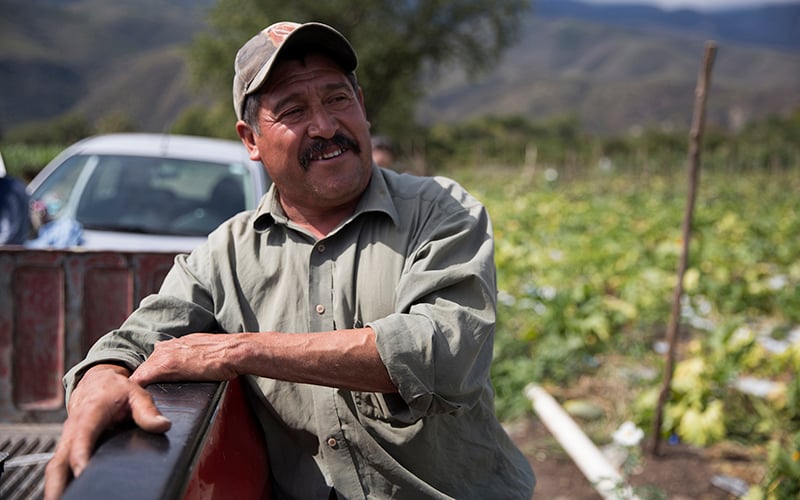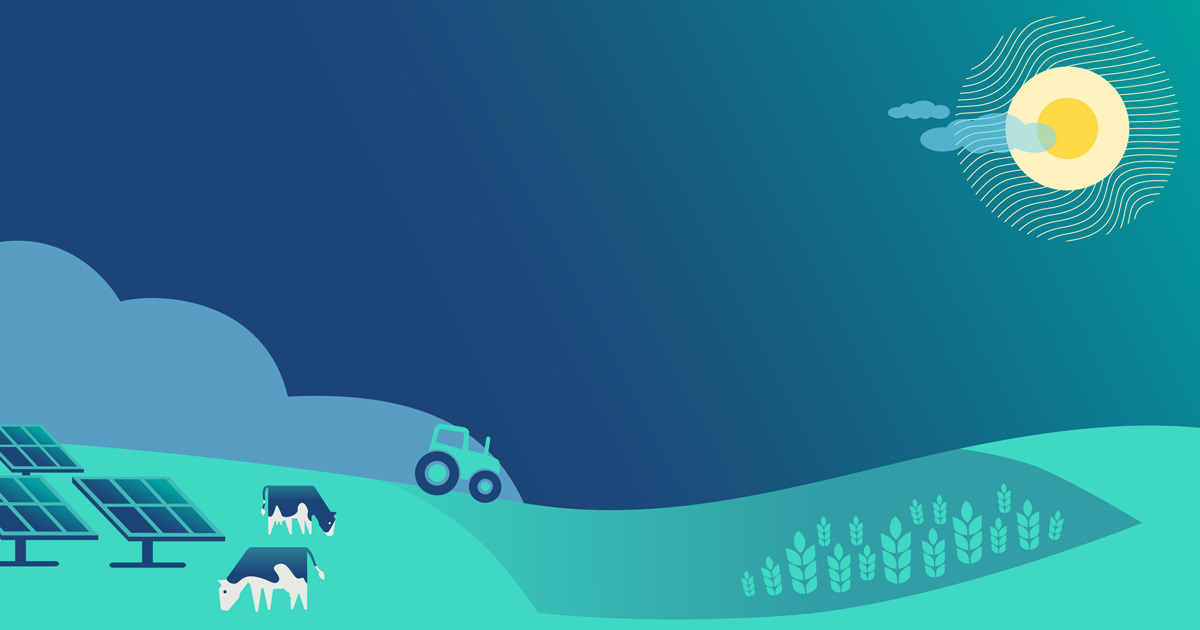Crop yields hang in the balance for many farmers – WITN

Report on Agricultural Challenges in Martin County, N.C. and Implications for Sustainable Development Goals
Executive Summary
Severe drought conditions in Martin County, North Carolina, are creating significant challenges for the agricultural sector during the critical fall harvesting and planting season. These climatic pressures directly threaten the achievement of several Sustainable Development Goals (SDGs), particularly those related to food security, poverty, climate action, and sustainable land use.
Impact on Food Production and Security (SDG 2: Zero Hunger)
The drought has created a precarious situation for local food systems, with expert analysis indicating a potential for below-average yields. This directly impacts SDG Target 2.4, which calls for sustainable and resilient agricultural practices. The potential for reduced yields threatens local food availability and the economic viability of food producers, undermining progress towards SDG Target 2.1 (ending hunger) and 2.3 (doubling agricultural productivity of small-scale producers).
- Peanuts: Maturation has been impeded, and harvesting is difficult due to hard, dry soil conditions.
- Soybeans: Yields are expected to be negatively impacted by prolonged dry weather.
- Corn: Harvests appear less affected by the drought compared to other crops.
Economic Vulnerability and Livelihoods (SDG 1: No Poverty & SDG 8: Decent Work and Economic Growth)
The financial stability of farmers in Martin County is at risk, as a successful harvest is crucial for covering operational expenses. The “roller coaster year” of weather patterns highlights the economic vulnerability of agricultural communities. This situation underscores the challenges in meeting SDG Target 1.5, which aims to build the resilience of vulnerable populations to climate-related extreme events and reduce their economic exposure. The strain on agricultural productivity also affects the broader goals of sustained regional economic growth (SDG 8).
Climate Change and Environmental Resilience (SDG 13: Climate Action & SDG 15: Life on Land)
The severe drought is a clear manifestation of the climate-related hazards impacting local economies, aligning with the focus of SDG 13 on strengthening resilience and adaptive capacity. The condition of the land itself is a primary concern.
- The firmness and dryness of the soil not only hinder harvesting but also indicate a degradation of land quality, a key concern of SDG 15 (Life on Land).
- The season’s weather volatility illustrates the increasing need for adaptive agricultural strategies to protect terrestrial ecosystems and combat land degradation (SDG Target 15.3).
Outlook and Path Forward
Despite the challenges, there is optimism among farmers as they prepare for the upcoming wheat planting season, hopeful that beneficial rainfall will outweigh the current drought. This situation highlights a critical need for long-term strategies focused on sustainable water management, soil health, and the adoption of drought-resistant crops to build a more resilient agricultural system in line with the Sustainable Development Goals.
Analysis of Sustainable Development Goals in the Article
1. Which SDGs are addressed or connected to the issues highlighted in the article?
- SDG 2: Zero Hunger: The article’s central theme is the impact of drought on crop production (peanuts, soybeans, corn), which directly relates to food security and agricultural productivity.
- SDG 1: No Poverty: The financial well-being of farmers is a key concern. The article notes that “Growers already needed a good crop to be able to pay expenses,” linking poor harvests directly to economic hardship.
- SDG 8: Decent Work and Economic Growth: Agriculture is a primary economic activity in the region. The article highlights how adverse weather conditions threaten agricultural productivity (“be a little below average or off our normal yield”), which in turn affects local economic stability and the livelihoods of those in the farming sector.
- SDG 13: Climate Action: The core problem discussed is a “severe” drought, a climate-related extreme weather event. The article illustrates the vulnerability of agricultural systems to such climate hazards.
2. What specific targets under those SDGs can be identified based on the article’s content?
-
Under SDG 2 (Zero Hunger):
- Target 2.3: By 2030, double the agricultural productivity and incomes of small-scale food producers. The article highlights a direct challenge to this target, stating that due to the drought, yields are expected to be “a little below average,” which negatively impacts both productivity and the income needed “to be able to pay expenses.”
- Target 2.4: By 2030, ensure sustainable food production systems and implement resilient agricultural practices. The article demonstrates a lack of resilience in the current agricultural system, as the drought has “primarily impacted peanuts from reaching optimum maturity” and is expected to affect soybeans, showing the system’s vulnerability to dry weather.
-
Under SDG 1 (No Poverty):
- Target 1.5: By 2030, build the resilience of the poor and those in vulnerable situations and reduce their exposure and vulnerability to climate-related extreme events. The farmers in Martin County are presented as a vulnerable group whose livelihoods are directly threatened by a climate-related event (drought), highlighting their exposure and the need for greater resilience.
-
Under SDG 13 (Climate Action):
- Target 13.1: Strengthen resilience and adaptive capacity to climate-related hazards and natural disasters in all countries. The entire situation described—where a drought severely impacts crops and farmer livelihoods—is a clear example of the consequences of insufficient resilience and adaptive capacity to climate-related hazards.
3. Are there any indicators mentioned or implied in the article that can be used to measure progress towards the identified targets?
While the article does not cite official SDG indicator codes, it provides qualitative and quantitative information that serves as proxies for these indicators:
- Crop Yield: The statement that yields will be “a little below average or off our normal yield” is a direct measure related to Indicator 2.3.1 (Volume of production per labour unit). It quantifies the impact on agricultural productivity.
- Farmer Income/Economic Viability: The concern that farmers “needed a good crop to be able to pay expenses” implies that their income is at risk. This relates to Indicator 2.3.2 (Average income of small-scale food producers), as a poor harvest directly reduces income.
- Economic Loss from a Climate-Related Disaster: The overall negative financial impact of the drought on farmers can be seen as a measure of economic loss. This aligns with the concept behind Indicator 1.5.2 (Direct economic loss attributed to disasters), where the disaster is the drought and the economic loss is felt in the agricultural sector.
- Impact on Crop Maturity and Harvest: The description of the drought’s effect on peanuts “from reaching optimum maturity” and causing “harvesting issues, as the ground has been too dry and firm” serves as a qualitative indicator of the agricultural system’s lack of resilience, relevant to Target 2.4 and Target 13.1.
4. Summary Table of SDGs, Targets, and Indicators
| SDGs | Targets | Indicators (Mentioned or Implied in the Article) |
|---|---|---|
| SDG 2: Zero Hunger | 2.3: Double agricultural productivity and incomes of small-scale food producers. 2.4: Ensure sustainable food production systems and resilient agricultural practices. |
– Crop yield being “below average or off our normal yield.” – Difficulty for growers “to be able to pay expenses,” implying reduced income. – Peanuts failing to reach “optimum maturity” due to drought. |
| SDG 1: No Poverty | 1.5: Build the resilience of the poor and vulnerable to climate-related extreme events. | – The article describes the economic vulnerability of farmers to the severe drought, a climate-related event. |
| SDG 8: Decent Work and Economic Growth | 8.2: Achieve higher levels of economic productivity. | – The expected decrease in crop yield signifies a reduction in agricultural productivity for the region. |
| SDG 13: Climate Action | 13.1: Strengthen resilience and adaptive capacity to climate-related hazards. | – The significant negative impact of the drought on crops and harvesting demonstrates the agricultural system’s lack of resilience to this specific climate hazard. |
Source: witn.com

What is Your Reaction?
 Like
0
Like
0
 Dislike
0
Dislike
0
 Love
0
Love
0
 Funny
0
Funny
0
 Angry
0
Angry
0
 Sad
0
Sad
0
 Wow
0
Wow
0



















































.jpg.webp?itok=0ZsAnae9#)
























